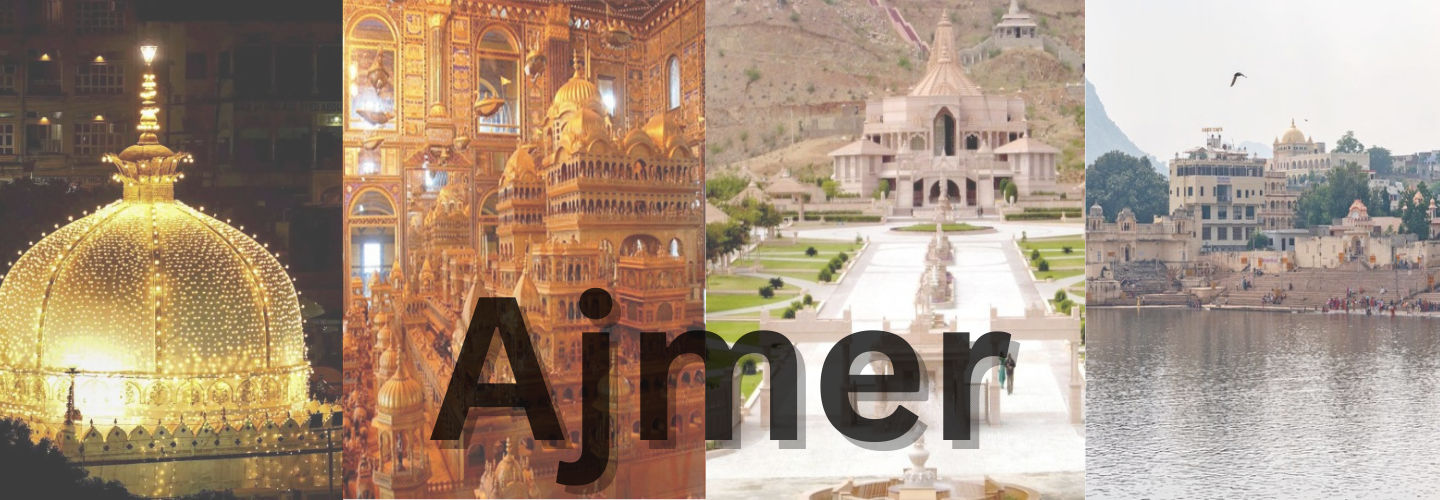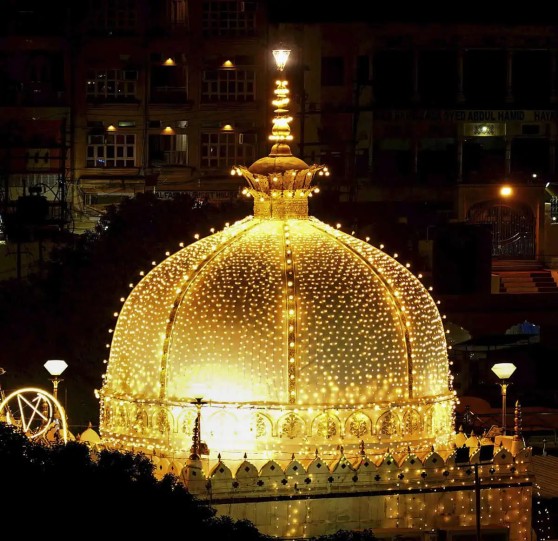
THE AJMER SHARIF DARGAH
The Ajmer Sharif Dargah is considered to be among the holiest Muslim shrines in India and is also a famous landmark in Ajmer. Khwaja Moin-ud-din Chishti, the Sufi saint from Persia is enshrined here. In keeping with his secular teachings, its doors are open to people of all faiths and religions.
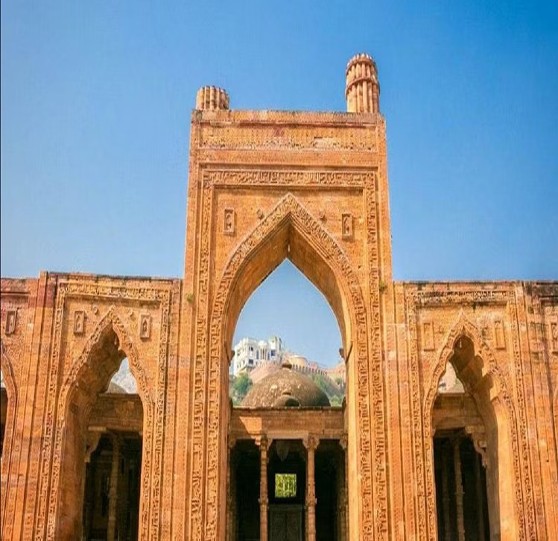
ADHAI DIN KA JHONPDA
Adhai Din Ka Jhonpra (literally is a historical mosque in the city of Ajmer in Rajasthan, India. It is one of the oldest mosques in India, and the oldest surviving monument in Ajmer. Commissioned by Qutb-ud-Din-Aibak in 1192 CE and designed by Abu Bakr of Herat, the mosque is an example of early Indo-Islamic architecture. The structure was completed in 1199 CE and was further enhanced by Iltutmish of Delhi in 1213 CE. An early example of the Indo-Islamic architecture, most of the building was constructed by Hindu masons, under the supervision of Afghan managers. The mosque retained most of the original Indian features, especially on the ornate pillars. The structure was used as a mosque up to 1947. After the independence of India, the structure was turned over to the Jaipur circle of ASI and is today visited by people of all religions, as a fine example of a mix of Indian, Hindu, Muslim and Jain architectures.

ANASAGAR LAKE
Ana Sagar Lake is an artificial lake situated in the city of Ajmer in Rajasthan state in India. It was built by Arnoraja (alias Ana), the grandfather of Prithviraj Chauhan, in 1135 -1150 AD and is named after him. The catchments were built with the help of local populace. The lake is spread over 13 km (8.1 mi). Mughal Emperor Jahangir constructed Daulat Bagh garden beside the lake. Shah Jahan constructed five pavilions (known as Baradari) between the garden and the lake. There is a Circuit house on a hill near the lake that used to be Lodha’s Residency. This is one of the main tourist attraction there. There is an island in the center of the lake which is accessible by boat. Boats could be hired from the east side of the Daulat Bagh. There are Chowpatty and Jetty walkway next to each other and Baradari to capture the scenic of the lake.
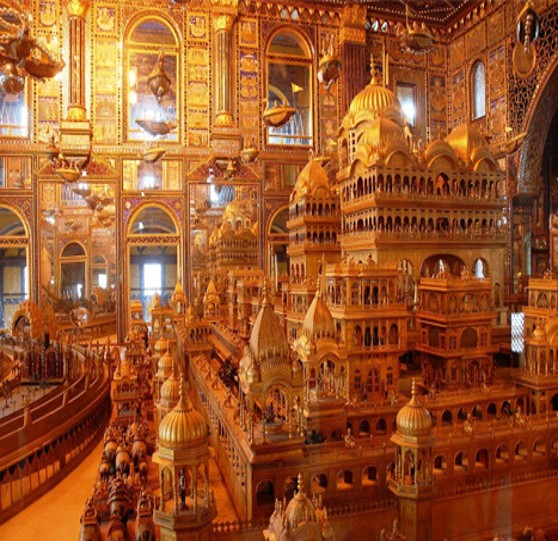
SONI JI KI NASIYAN
The Ajmer Jain temple, also known as Soniji Ki Nasiyan, is a Jain temple known for its architecture. It was built in the late nineteenth century. The main chamber, known as the Swarna Nagari "City of Gold", has several gold-plated wooden figures, depicting several figures in the Jain religion. This golden chamber of the temple uses 1000 kg of gold to carve out a depiction of Ayodhya. Ajmer's main attraction is - for the Jainas - the prominently situated Nasiayan Digambara Temple, or rather the two-storied Svarana Nagara Hall behind the temple, better known as the Museum. Both the temple and the museum were built and are still owned by the Soni family of Ajmer.
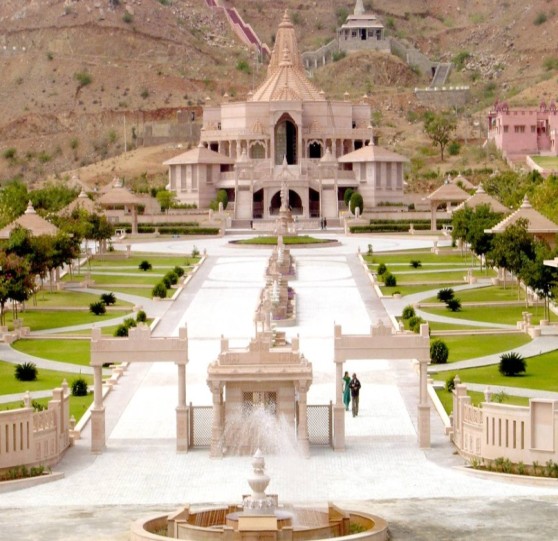
NARELI JAIN TEMPLE
Nareli Jain Temple or Shri Gyanodaya Tirth Kshetra, is a new Jain temple located on the outskirts of Ajmer 7 kilometers from the city center and 128 kilometers west of Jaipur on the main national highway 8. Ashok Patni of RK Marbles constructed this temple. The temple is situated on the Aravali Mountain range. The temple was estimated to cost around Rupees 50 crore, but ended up costing close to Rupees 100 crore. The main temple was built by Dinanath ji Jain after him the construction is completed by Deepak Jain and his family. The temple is an important Jain pilgrimage site for Digambar Jains. The temple complex consists 24 small Jinalaya for 24 tirthankars.

PUSHKAR
Pushkar is a temple town, near Ajmer City and headquarters of Pushkar tehsil in the Ajmer district in the Indian state of Rajasthan. It is situated about 10 km (6.2 mi) northwest of Ajmer and about 150 kilo meters (93 mi) southwest of Jaipur.[1] It is a pilgrimage site for Hindus and Sikhs. Pushkar has many temples. Most of the temples and ghats in Pushkar are from the 18th century and later, because many temples were destroyed during Muslim conquests in the area. Subsequently, the destroyed temples were rebuilt. The most famous among Pushkar temples is the red spired Brahma Temple. It is considered a sacred city by the Hindus particularly in Shaktism, and meat and eggs consumption are forbidden in the city. Pushkar is located on the shore of Pushkar Lake, which has many ghats where pilgrims bathe.
